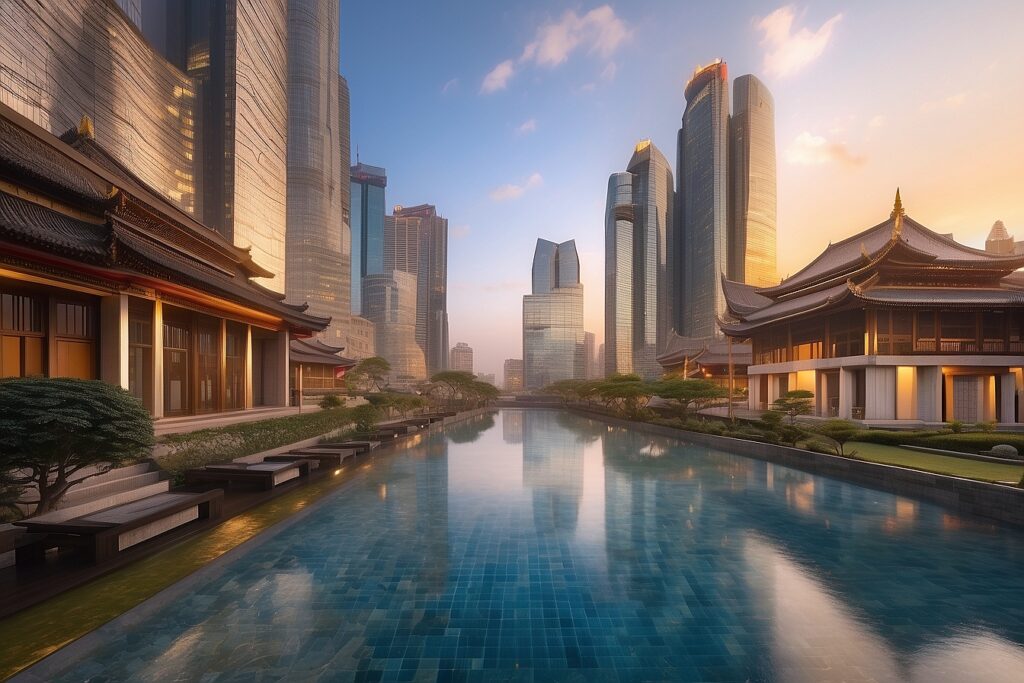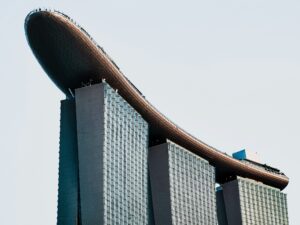Resilient Momentum: Singapore Residential Market Eyes Surpassing 2020 Sales Figures

The trajectory of Singapore’s residential property market in 2021 is poised to surpass the sales volume recorded in the preceding year, reaching beyond the 20,909 private homes sold in 2020.
The residential property market in Singapore has navigated a nuanced path marked by moments of hopeful recovery in the first quarter, only to face economic uncertainties triggered by new COVID-19 outbreaks, leading to additional circuit breaker measures. Despite this “two steps forward, one step back” scenario, property analysts universally concur that the market has demonstrated remarkable resilience.
In the second quarter (Q2), amid tightened measures and circuit breaker implementations, private sale volumes and prices exhibited robust stability. OrangeTee’s Private Residential Market Report reveals that the overall price index for private residential properties increased by 0.8% in Q2 2021, marking the fifth consecutive quarterly increase. However, this growth rate is notably more moderate compared to the 3.3% seen last year.
Christine Sun, Senior Vice President of Research & Analytics at OrangeTee, notes the market’s resilience, stating, “Demand for residential properties has been resilient this year despite the heightened alert measures. A total of 16,549 private homes (excluding executive condominiums) have been sold. The full-year sales for 2021 are poised to surpass the 20,909 inked in 2020.”
In the Private Residential Market Report, OrangeTee identifies the primary driver of the Q2 price increase as non-landed homes in the Outside Central Region (OCR), which saw a 1.9% quarter-on-quarter rise. The OCR, where supply is relatively constrained, experienced the fastest price growth.
Conversely, the price increments were less pronounced for the Core Central Region (CCR) at 1.1% and the Rest of Central Region (RCR) at 0.1%.
Despite a re-tightening of measures in late July, market appetite remained strong. Tricia Song, Head of Research at CBRE Southeast Asia, highlights a surge of 82.2% month-on-month in developer sales in July, even with only one major launch. This underscores continued demand for homes, particularly in suburban areas.
Interestingly, the circuit breaker measures played a role in cooling the market during Phase 2 (Heightened Alert), offering a unique scenario where the market adjusted without significant government intervention. This adaptability underscores the resilience and dynamics of Singapore’s residential property market in the face of external challenges.
Dynamics Shift: New vs. Resale Markets in Singapore’s Residential Real Estate
The first half of 2021 witnessed a distinct shift in the residential real estate market of Singapore, with the resale segment taking center stage in contrast to new home sales.
According to Sun, new home sales experienced a notable dip of 15.1%, dropping from 3,493 units in the first quarter (Q1) to 2,966 units in Q2. This deceleration was attributed to movement restrictions imposed during Singapore’s heightened alert period in May, impacting the pace of transactions in the new home segment.
Conversely, the resale market saw a robust uptick, registering an 18% quarter-on-quarter increase from 4,519 units in Q1 2021 to 5,333 units in Q2 2021. Sun highlights that this marks the highest quarterly resale volume since Q3 2009 (5,809 units), indicating a notable shift in buyer preferences towards the resale market, particularly in the suburban regions where new launches were comparatively scarce.
Song from CBRE notes that the widening price gap between the resale and new sale markets may be influenced by factors such as the decaying lease of older projects (especially if they are leasehold), the aging and depreciation of buildings, facilities, and designs. Older projects, typically featuring larger floor plans that may be less efficient in today’s context, tend to command a lower price per square foot.
Dr. Tan Tee Khoon, PropertyGuru Singapore’s country manager, emphasizes that resale or secondary market transactions formed nearly 60% of total private residential sales. Developers’ new launches took a backseat during Phase 2 Heightened Alert, suggesting a shift in homeowner priorities. Dr. Tan observes that some homeowners in Singapore may be in urgent need of accommodation, making resale properties a more viable and immediate option for them.
This shift in market dynamics underscores the resilience and adaptability of Singapore’s real estate landscape amid evolving external factors.
Resilient Residences: Singapore’s Luxury Real Estate Market Hits 11-Year High
In a surprising turn of events, the luxury home segment in Singapore has not only weathered the effects of the circuit breaker but has also marked an 11-year sales high during the second quarter.
OrangeTee reported that a total of 1,795 luxury homes were sold in Q2, representing the highest quarterly sales since the all-time peak of 1,876 units recorded in Q4 of 2010. The remarkable sales performance is credited to the launch of several luxury projects in the Core Central Region (CCR), including Irwell Hill Residences, One Bernam, and Park Nova. Additionally, some developers initiated sales promotions to drive interest and sales for specific units.
Among the top-selling luxury projects were Irwell Hill Residences (332 units), Hyll on Holland (85 units), One Bernam (81 units), Leedon Green (54 units), Fourth Avenue Residences (46 units), D’Leedon (24 units), Pullman Residence Newton (22 units), 8 Saint Thomas (22 units), Midtown Modern (22 units), Royalgreen (21 units), and The Avenir (21 units).
OrangeTee’s data reveals that the overall average price of non-landed luxury homes in CCR experienced a marginal dip of 1.4%, from $2,347 per square foot (psf) in Q1 2021 to $2,314 psf in Q2 2021. While the average price of new non-landed homes slipped by 2.2%, resale non-landed homes saw a 0.9% decline over the same period.
A noteworthy trend in both prime landed and non-landed residential properties is the growing demand for larger spaces. Knight Frank’s data indicates a preference for larger floorplates to accommodate both living and working within the comfort of homes. The demand for larger non-landed homes in prime districts has notably increased.
In H1 2021 alone, the prime non-landed residential segment witnessed a flurry of deals amounting to $2 billion, marking the highest sales since H2 2010 when luxury market sales totaled approximately $2.4 billion. Rebounding from the recession induced by the pandemic last year, the sales activity in H1 2021 doubled the amount registered in the latter half of 2020 and surpassed the total transacted in the entire year of 2020, which was $1.7 billion.
Contributing significantly to the upsurge in luxury residence demand are foreign millennials in Singapore. PropertyGuru’s latest Consumer Sentiment Study (CSS) revealed that one in three millennials in Singapore (32%) aspires to purchase a luxury property in the long run, with the majority citing this investment as a reliable long-term opportunity (66%).
This confluence of factors paints a resilient picture for Singapore’s luxury real estate market, defying expectations and indicating a robust trajectory for the remainder of the year.
Projections for Singapore’s Real Estate Market: A Path to Recovery
While the real estate market experienced a slowdown in Q2, industry analysts are optimistic that, barring unforeseen circumstances, the market is poised to recover by the end of 2021.
CBRE’s Song highlights the resilience of the market, stating that the year-to-date (YTD) tally has already reached over 80% of 2020’s full-year take-up. Predicting a surge in new developer sales, Song expects the figures to reach around 11,000 units, surpassing 2020’s 9,982 units. With a year-to-June price increase of 4.1%, CBRE Research anticipates private home prices to rise by 6.0% to 8.0% for the entire year, contingent on the absence of unforeseen circumstances.
KF Singapore’s Tay supports this positive outlook, emphasizing that the market will continue to be buoyed by genuine demand from sectors that benefited economically from the pandemic, such as technology and pharmaceuticals, as well as certain Housing and Development Board (HDB) upgraders.
Tay projects an increase in private residential prices within the range of approximately 7% to 9%, with rents expected to rise by 5% to 8% throughout 2021.
OrangeTee’s Sun adds an interesting dimension, forecasting that total resale volume will surpass the figures recorded in 2019 and 2020. Sun suggests that buyers seeking affordable homes may increasingly turn to the resale market in suburban regions or selected city fringe areas. The estimated resale volume for this year is expected to range between 17,000 to 18,000 units, surpassing the total resale volume in both 2019 and 2020.
PropertyGuru Singapore’s Tan observes a clear trend of rising property prices across both the private and HDB markets. However, Tan notes that prices have remained relatively stable, with no major corrections.
Given the likely affordability of mortgage rates in 2021, driven by their close correlation to federal reserve rates and the expectation that interest rates will be kept near zero until 2023, Tan anticipates positive momentum in both property demand and supply.
Additionally, he highlights the government’s stance, shared during a media briefing on the Monetary Authority of Singapore (MAS) Annual Report on June 30, 2021, stating that they “do not think the market is overheated right now.” This sentiment diminishes the likelihood of property curbs in the current year. Overall, the collective insights indicate a positive trajectory for Singapore’s real estate market, pointing towards recovery and sustained growth in the coming months.



